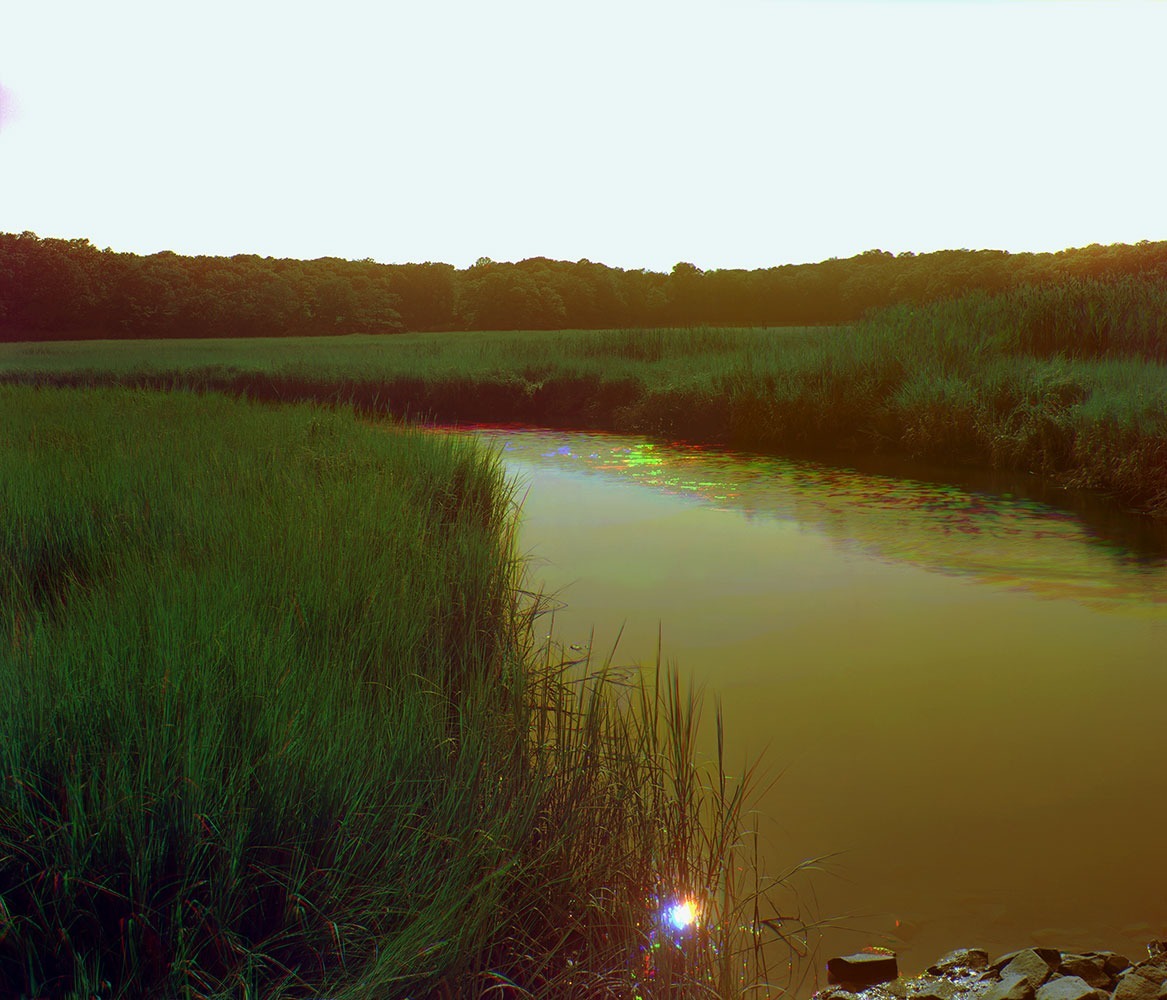Since the 1970s, James Welling (Born 1951 in Hartford, CT) has pursued a wide-ranging artistic practice, exploring themes from personal and cultural memory, the material and chemical nature of photography, to the relationships between representation and abstraction. A self-taught photographer, Welling has experimented with numerous techniques of analog and digital photography, pushing the medium into new directions. While the subjects of Welling’s work have varied, light, color, and their permutations have been central to his practice for decades.
In 1997, Welling began a series of tricolor photographs, which are color images made through his use of tricolor filters, black-and-white film, and Photoshop. Inlet (which is part of this body of work), pictures Jarvis Creek, a curved tributary running through a reed-filled salt marsh in Guilford, Connecticut. It appears like a straight photograph of an idyllic landscape, and yet, when looked at more closely, subtle distortions appear. To create such images, the artist exposed separate sheets of black-and-white film through red, green, and blue filters, and then scanned these negatives and recombined them in Photoshop to create the final print. The ramifications of this process are most clear in areas of bright light, such as the sun’s reflection in the water, which appear to fracture into colored bands of pink, yellow, and blue. The tones reflect the four colors used to create all shades in digital inkjet printing—the process used to print this photograph. These visual artifacts of the process heighten a tension central to photography, between the reality of the subject and the acts of representation and reproduction, here called out specifically through the effects of light and color in the creation of the photograph.
